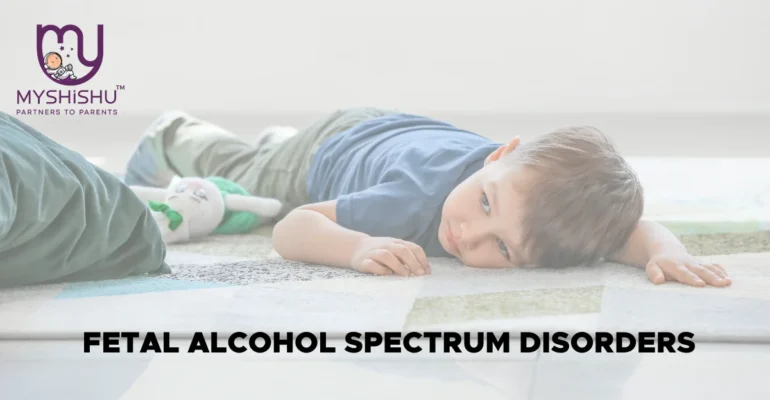Fetal Alcohol Spectrum Disorders: A Comprehensive Guide
Fetal Alcohol Spectrum Disorders: A Comprehensive Guide
This comprehensive exploration delves into fetal alcohol spectrum disorders (FASDs), analyzing their origins, manifestations, diagnostic approaches, preventative strategies, and treatment modalities. FASDs, stemming from maternal alcohol consumption during pregnancy, pose a spectrum of challenges across physical, behavioral, and cognitive dimensions. Understanding the intricate nature of FASDs is vital for effective intervention and support for affected individuals and their families. By investigating the scientific foundations of FASDs and highlighting pivotal considerations surrounding prenatal alcohol exposure, this piece seeks to raise awareness and advocate for proactive measures to mitigate the enduring impacts of this preventable condition.
Introduction
Welcome to an illuminating journey into the intricate world of Fetal Alcohol Spectrum Disorders (FASDs). In this exploration, we uncover the complexities surrounding FASDs, ranging from their origins to their impact on individuals and families. FASDs, arising from maternal alcohol consumption during pregnancy, present a spectrum of challenges spanning physical, behavioral, and cognitive domains. Understanding the multifaceted nature of FASDs is paramount for effective intervention and support. Join us as we delve into the science behind FASDs, shedding light on crucial aspects that influence prenatal alcohol exposure and striving to foster awareness and proactive measures in addressing this preventable yet impactful condition.
Table of Contents
What are Fetal Alcohol Spectrum Disorders?
Fetal Alcohol Spectrum Disorders (FASDs) represent a spectrum of conditions resulting from prenatal alcohol exposure. This umbrella term encompasses a range of developmental, behavioral, and cognitive impairments that can affect individuals throughout their lives. FASDs are caused by maternal alcohol consumption during pregnancy, which allows alcohol to cross the placenta and interfere with fetal development. The severity and manifestation of FASDs vary widely, depending on factors such as the timing, frequency, and quantity of alcohol exposure.
Common features of FASDs include physical abnormalities, such as facial dysmorphology and growth deficiencies, as well as neurodevelopmental deficits, including learning disabilities, attention deficits, and impaired executive functioning. Understanding the nuances of FASDs is essential for early identification, intervention, and support for affected individuals and their families, as well as for raising awareness and implementing preventive measures to reduce the prevalence of this preventable condition.
What’s the difference between fetal alcohol syndrome (FAS) and fetal alcohol spectrum disorders (FASDs)?
Fetal Alcohol Syndrome (FAS) and Fetal Alcohol Spectrum Disorders (FASDs) represent distinct but related concepts within the spectrum of conditions resulting from prenatal alcohol exposure. FAS is a specific diagnosis within the broader category of FASDs. FAS is characterized by a distinct set of physical features, including facial dysmorphology (such as a smooth philtrum, thin upper lip, and small eye openings), growth deficiencies, and central nervous system abnormalities. Additionally, individuals diagnosed with FAS often exhibit cognitive and behavioral impairments, such as intellectual disabilities, learning difficulties, and social challenges.
On the other hand, fetal alcohol spectrum disorders (FASDs) encompass a broader range of conditions that result from prenatal alcohol exposure. This umbrella term includes FAS as well as other conditions such as Partial Fetal Alcohol Syndrome (pFAS), Alcohol-Related Neurodevelopmental Disorder (ARND), and Alcohol-Related Birth Defects (ARBD). While individuals with FAS exhibit the characteristic physical features in addition to cognitive and behavioral impairments, those with other FASDs may not display the full spectrum of physical abnormalities but still experience neurodevelopmental deficits and functional impairments. Understanding this distinction is crucial for accurate diagnosis, intervention, and support for individuals affected by prenatal alcohol exposure.
How common is fetal alcohol syndrome (FAS)?
Fetal Alcohol Syndrome (FAS) is relatively rare, with prevalence estimates varying globally. In the United States, it is estimated to affect approximately 0.2 to 1.5 per 1,000 live births. However, FAS may be underreported or misdiagnosed due to its complex presentation and the stigma surrounding maternal alcohol consumption during pregnancy. The prevalence of FAS varies among different populations and regions, influenced by factors such as maternal alcohol consumption patterns, access to healthcare, and awareness of FAS diagnostic criteria. Despite its low prevalence, FAS carries significant implications for affected individuals and their families, highlighting the importance of prevention and early intervention efforts.

Symptoms of Fetal Alcohol Spectrum Disorders (FASDs)
- Physical features:
- Smooth philtrum, thin upper lip, and small eye openings: These facial characteristics are often present in individuals with FASDs and are recognizable diagnostic markers.
- Growth deficiencies: Children with FASDs may exhibit slower growth rates and have lower birth weights compared to typical development.
- Skeletal abnormalities and organ malformations: These can include abnormalities in bone development and structural defects in organs, which may lead to health complications.
- Behavioral symptoms:
- Hyperactivity and impulsivity: Children with FASDs may display difficulties in controlling their impulses and may be excessively active.
- Poor social skills: Challenges in understanding social cues, maintaining friendships, and navigating social interactions are common.
- Difficulty with executive functioning: This includes problems with planning, organizing, problem-solving, and self-regulation, which can impact daily functioning and academic performance.
- Cognitive impairments:
- Learning disabilities: Children with FASDs often struggle with acquiring new skills and may have difficulties in areas such as reading, writing, and math.
- Attention deficits: Issues with sustaining attention and staying focused on tasks are prevalent, contributing to academic and behavioral challenges.
- Intellectual disabilities: Some individuals with FASDs may have below-average intellectual functioning, affecting their overall cognitive abilities and adaptive skills.
Causes of Fetal Alcohol Spectrum Disorders (FASDs):
- Maternal alcohol consumption during pregnancy:
- Alcohol crosses the placenta. When a pregnant woman drinks alcohol, it easily passes through the placental barrier and enters the bloodstream of the fetus.
- Disrupts normal development: Alcohol exposure during critical periods of fetal development, especially during the first trimester when organogenesis occurs, can interfere with the formation and function of various organs and systems.
- Timing, frequency, and quantity of alcohol consumption:
- First-trimester vulnerability: The early stages of pregnancy are particularly susceptible to alcohol-related harm, as this is when organ development is most active.
- Individual differences in alcohol metabolism and susceptibility:
- Genetic factors: Variations in genes related to alcohol metabolism can affect how alcohol is processed in the body, influencing the level of exposure and susceptibility to its effects.
- Environmental factors: Factors such as maternal nutrition, stress levels, and exposure to other substances may interact with alcohol exposure, affecting the risk and severity of FASDs.
Understanding these symptoms and causes is crucial for early identification, intervention, and support for individuals affected by FASDs, as well as for raising awareness and implementing preventive measures to reduce the prevalence of this preventable condition.
How much alcohol causes fetal alcohol syndrome?
The amount of alcohol that can cause Fetal Alcohol Syndrome (FAS) varies, but even small amounts can pose risks to fetal development. There is no known safe level of alcohol consumption during pregnancy, highlighting the importance of abstaining from alcohol to prevent FAS and other fetal alcohol spectrum disorders (FASDs).
Symptoms of Fetal Alcohol Spectrum Disorders (FASDs)
- Physical features
- Smooth philtrum
- Thin upper lip
- Small eye openings
- Growth deficiencies
- Skeletal abnormalities
- Organ malformations
- Behavioral symptoms
- Hyperactivity
- Impulsivity
- Poor social skills
- Difficulty with executive functioning
- Cognitive impairments
- Learning disabilities
- Attention deficits
- Intellectual disabilities
How early can you tell if your child has fetal alcohol syndrome?
Signs of Fetal Alcohol Syndrome (FAS) may be observable shortly after birth, particularly physical features like a smooth philtrum, a thin upper lip, and small eye openings. However, cognitive and behavioral symptoms may become more apparent as the child grows older, often becoming noticeable during early childhood development.
Diagnosis of Fetal Alcohol Spectrum Disorders (FASDs) and Tests
- Physical examination:
- Healthcare providers assess for characteristic facial features such as a smooth philtrum, a thin upper lip, and small eye openings, which are indicative of prenatal alcohol exposure.
- Developmental evaluation:
- A comprehensive assessment of developmental milestones, cognitive abilities, and behavioral functioning helps identify delays or impairments associated with FASDs.
- Maternal history:
- Information regarding maternal alcohol consumption during pregnancy is crucial for assessing the risk of FASDs and guiding diagnostic decisions.
- Diagnostic criteria:
- The diagnosis of FASDs is based on established criteria, which may include physical features, developmental delays, and behavioral impairments consistent with prenatal alcohol exposure.
- Additional testing:
- Laboratory tests, imaging studies, and neurodevelopmental assessments may be conducted to further evaluate the extent of fetal alcohol-related damage and rule out other medical conditions.
Management and Treatment of Fetal Alcohol Spectrum Disorders (FASDs)
- Early intervention:
- Prompt identification and intervention services, including speech and language therapy, occupational therapy, and behavioral interventions, can help address developmental delays and improve outcomes.
- Individualized support:
- Tailored educational plans and accommodations in school settings can facilitate learning and socialization for children with FASDs, addressing their unique strengths and challenges.
- Behavioral therapy:
- Behavioral interventions, such as applied behavior analysis (ABA) and social skills training, aim to address behavioral difficulties, improve self-regulation, and enhance social interactions.
- Medication management:
- Medications may be prescribed to manage co-occurring conditions, such as attention deficit hyperactivity disorder (ADHD), anxiety, or depression, in individuals with FASDs.
- Family support:
- Providing education, counseling, and support services for families affected by FASDs can help them navigate challenges, access resources, and advocate for their child’s needs effectively.
- Multidisciplinary approach:
- Collaboration among healthcare professionals, educators, therapists, and community resources is essential to providing comprehensive care and support for individuals with FASDs and their families.
- Long-term planning:
- Planning for transition to adulthood, vocational training, and independent living skills development can help adolescents and young adults with FASDs transition successfully into adulthood and achieve their full potential.
- Prevention:
- Raising awareness about the risks of prenatal alcohol exposure and promoting alcohol-free pregnancies are crucial in preventing FASDs and minimizing the impact of prenatal alcohol exposure on future generations.
Prevention of Fetal Alcohol Spectrum Disorders (FASDs)
- Education and awareness:
- Providing comprehensive education to women of childbearing age, their partners, and healthcare providers about the risks of prenatal alcohol exposure is essential for prevention.
- Screening and intervention:
- Routine screening for alcohol use during pregnancy and providing appropriate interventions, such as counseling and support services, for women struggling with alcohol use can help prevent FASDs.
- Supportive environments:
- Creating supportive environments that promote alcohol-free pregnancies, such as workplaces, schools, and communities, can help reduce the prevalence of FASDs by encouraging healthy behaviors and social norms.
- Access to resources:
- Ensuring access to comprehensive prenatal care, substance abuse treatment programs, and support services for women at risk of alcohol use during pregnancy is crucial to preventing FASDs and supporting maternal and child health.
- Policy initiatives:
- Implementing policies and regulations that restrict access to alcohol, particularly among pregnant women, and promote alcohol-free environments can contribute to FASD prevention efforts at the population level.
- Advocacy and collaboration:
- Engaging in advocacy efforts and fostering collaboration among policymakers, healthcare providers, community organizations, and stakeholders can mobilize support for FASD prevention initiatives and promote positive change.
When to Seek a Healthcare Provider for Fetal Alcohol Spectrum Disorders (FASDs)
- Prenatal care:
- If you are pregnant or planning to become pregnant and have concerns about alcohol use, seek guidance from your healthcare provider for support and resources to ensure a healthy pregnancy.
- Early signs of FASDs:
- If you notice any early signs or symptoms of FASDs in your child, such as developmental delays, behavioral challenges, or physical abnormalities, consult with your healthcare provider for evaluation and guidance.
- Maternal alcohol consumption:
- If you have consumed alcohol during pregnancy and are worried about its potential impact on your child’s health, discuss your concerns with your healthcare provider to address any potential risks and explore available resources for support.
- Family history:
- If you have a family history of alcohol use disorder or FASD, or if you suspect that a family member may be affected by prenatal alcohol exposure, seek healthcare provider guidance for appropriate screening, evaluation, and support services.
- Concerns about alcohol use:
- If you or someone you know is struggling with alcohol use or addiction during pregnancy, seek healthcare provider assistance for comprehensive evaluation, counseling, and access to substance abuse treatment programs to ensure maternal and fetal well-being.
Additional common question
-
What are the disabilities of the fetal alcohol spectrum?
Children with FASD can have serious lifelong disabilities other than intellectual disabilities, such as learning disabilities and serious behavioral problems. The good news is that FASD is not hereditary and only occurs if a woman drinks alcohol during her pregnancy. In other words, FASD is 100% preventable.
-
What is a fetal alcohol spectrum disorder patient?
Individuals with FASD can also have permanent vision and hearing problems; poorly developed bones, limbs, and fingers; and damage to the heart, kidney, liver, and other organs. Secondary disabilities are those not present at birth but occur later in life as a result of the primary disabilities associated with FASD.
-
What are the 3 types of FASDs?
Depending on the features identified, the medical disorders labeled as FASD include: Fetal Alcohol Syndrome (FAS), partial FAS (pFAS), alcohol-related neurodevelopmental disorder (ARND), alcohol-related birth defects (ARBD), and neurobehavioral disorder associated with prenatal alcohol exposure (ND-PAE).
-
What is the treatment for fetal alcohol syndrome?
There is no cure for FASDs, but research shows that early intervention treatment services can improve a child’s development. Early intervention services help children from birth to 3 years of age (36 months) learn important skills. Services include therapy to help the child talk, walk, and interact with others.
-
What is the difference between fetal alcohol syndrome and fetal alcohol spectrum?
Fetal alcohol spectrum disorders (FASD) result from prenatal exposure to alcohol and include fetal alcohol syndrome (FAS), partial fetal alcohol syndrome (PFAS), alcohol-related neurodevelopmental disorder, and alcohol-related birth defects. FAS is the most severe form of FASD
-
What causes fetal alcohol syndrome?
A permanent condition, fetal alcohol syndrome (FAS) happens when a person consumes any amount of alcohol during a pregnancy. Alcohol use during pregnancy can interfere with the baby’s development, causing physical and mental defects.
-
What is the only true way to prevent FAS?
Because abstaining from alcohol before and throughout pregnancy is the only way to guarantee the birth of a child free of FAS/FAE, prevention programs try to target women before they become pregnant.
-
How do you test for fetal alcohol syndrome?
Diagnosing FASD can be hard because there is no medical test, like a blood test, for it. The healthcare provider will make a diagnosis by looking at the child’s signs and symptoms and asking whether the mother drank alcohol during pregnancy. FASDs last a lifetime. There is no cure for FASDs, but treatments can help.
Conclusion
In conclusion, fetal alcohol spectrum disorders (FASDs) represent a significant public health concern with far-reaching implications for affected individuals and their families. From the complexities of diagnosis and management to the critical importance of prevention and early intervention, addressing FASDs requires a multifaceted approach. By raising awareness about the risks of prenatal alcohol exposure, providing support for women during pregnancy, and advocating for comprehensive healthcare services, we can work towards reducing the incidence and impact of FASDs.
Healthcare providers, policymakers, educators, and communities need to collaborate in promoting alcohol-free pregnancies, supporting affected individuals, and fostering environments that prioritize maternal and child health. Together, we can strive to prevent FASDs, improve outcomes for affected individuals, and create a future where every child has the opportunity to thrive, free from the preventable burden of prenatal alcohol exposure.










